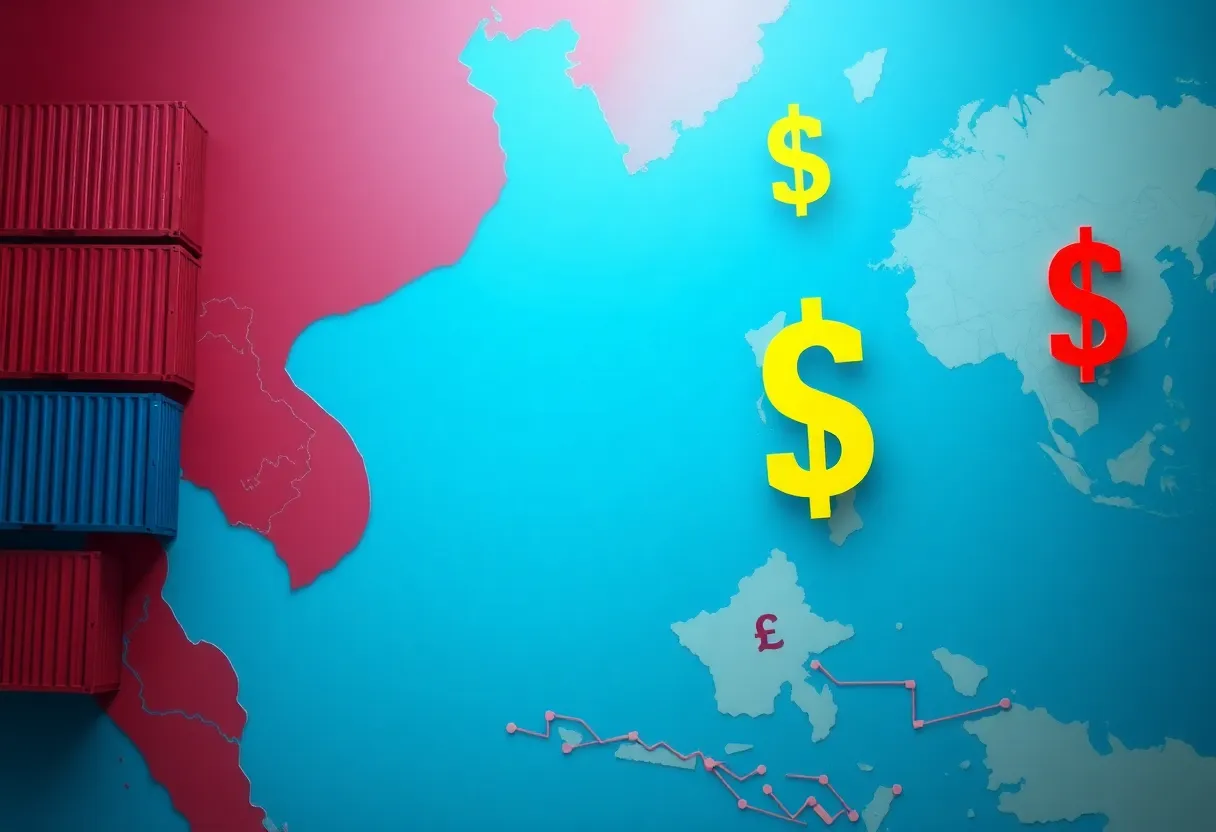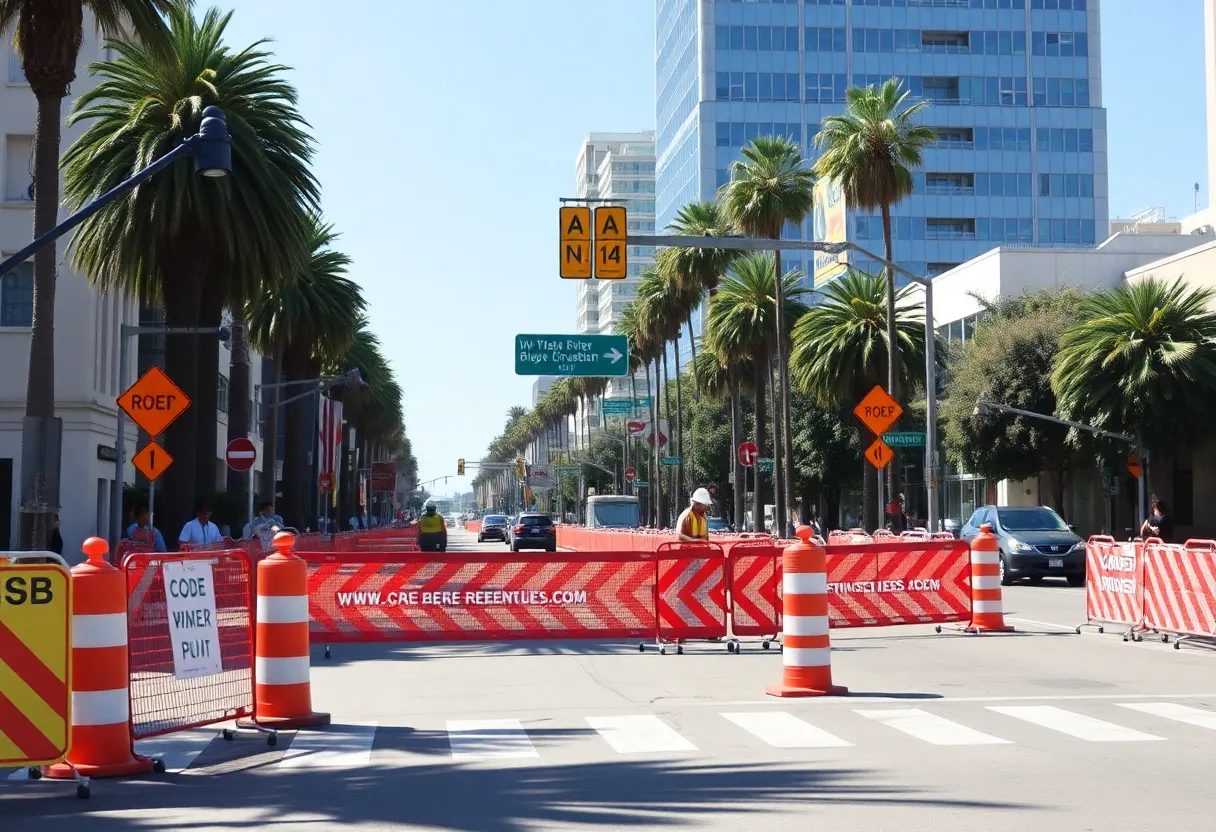News Summary
Southeast Asia faces economic turmoil as U.S. tariffs threaten export-driven nations. Prime Minister Lawrence Wong warns of a shift towards protectionism, impacting economies reliant on trade. Countries scramble for solutions amid concerns of political instability and struggles for vital industries like fisheries and garments.
Trump’s Tariffs Shake-Up Southeast Asia
As economic tides shift globally, Singaporean Prime Minister Lawrence Wong has raised alarms about a new phase in globalization marked by a surge of protectionism. Southeast Asia, with its economies heavily reliant on exports, is facing a wave of uncertainty due to new tariffs imposed by the U.S. government. The reality on the ground is less about potential growth and more about a looming economic crisis that can’t be ignored.
Export-Driven Economies in Jeopardy
In 2022, the collective trade-to-GDP ratio for ASEAN countries hit an impressive 106.2%, topping that of the European Union, which stood at 103.6%. This is a clear indication of how vital foreign trade is for these nations. A staggering 80.8% of ASEAN’s exports are goods, with the United States being the second-largest market after China—importing nearly 20% of ASEAN’s exports. However, recent economic changes threaten this vital segment.
Who’s Feeling the Pinch?
Virtually every ASEAN country is feeling the effects of U.S. tariffs. From Cambodia, which has been hit hard with over 49% of its trade affected, to the more minor impacts seen in Singapore, which stands at 10%, it’s a widespread concern. Countries like Laos and Vietnam also see impressive percentages of their economies under strain—closely trailing with 48% and 46%, respectively. The tariffs have disproportionately affected poorer nations, which have typically relied on their export markets.
Initial Optimism Turns to Concern
Many ASEAN nations initially welcomed the idea of Trump’s return to office. They perceived him as a pro-business leader who would foster open trade deals. However, the reality has been starkly different. The administration’s aggressive stance on tariffs has begun to break down the trust and confidence that once existed. The mood has shifted significantly, as countries look for ways to navigate this new and challenging landscape.
A Game of Appeasement
Countries like Vietnam and Cambodia are making moves to appease U.S. officials by proposing tariff cuts on U.S. goods. Despite these overtures, the current state of affairs is more alarming than ever, as trade advisor Peter Navarro has labeled the situation a national emergency, rather than a negotiation opportunity. This leaves ASEAN countries scrambling, as they do not possess the economic backbone to confront the U.S. directly in any trade disputes, forcing them into a corner of reliance on appeasement strategies.
Political Ramifications Loom
The economic turmoil stemming from these tariffs could lead to serious political crises, echoing the 1997-98 Asian financial crisis that rocked the region. If the economic conditions worsen significantly, there’s a pressing risk of political instability. Historical lessons reveal that such crises can lead to regime collapses and widespread unrest—something no nation wants to face.
Industries at Risk
Aside from general economic concerns, specific industries that thrive on cheap labor, like fisheries and garment factories, are under immense threat from increased tariffs. These sectors are vital to many Southeast Asian economies and form the backbone for countless jobs. If tariffs continue without reprieve, these industries may struggle to survive, placing even more pressure on the region’s workforce and market dynamics.
The Road Ahead
In light of these challenges, ASEAN countries must navigate a complex international landscape marked by shifting alliances and strategies. The conversation around protectionism is heating up, and the ripple effects of U.S. tariffs will be felt for a long time. As governments strategize their next moves, the overarching question remains: how will Southeast Asia respond to a world increasingly leaning towards protectionist policies?
Deeper Dive: News & Info About This Topic
- Bloomberg: Southeast Asian Stocks Sink as Tariffs Squeeze Out Investors
- Wikipedia: Protectionism
- The Diplomat: Southeast Asian Governments Seek Negotiations Over Trump Tariffs
- Encyclopedia Britannica: International Trade
- Nikkei Asia: Trump Tariffs Threaten Low-Cost Southeast Asia Manufacturers
- Google Search: Trump Tariffs Southeast Asia
- CGTN: Malaysian PM: Southeast Asia Must Stand Firm Against U.S. Tariffs
- Google Scholar: Southeast Asia Trade
- Bloomberg: Malaysia Pushes for Coordinated Southeast Asia Tariff Response
- Google News: U.S. Tariffs Impact on Southeast Asia






